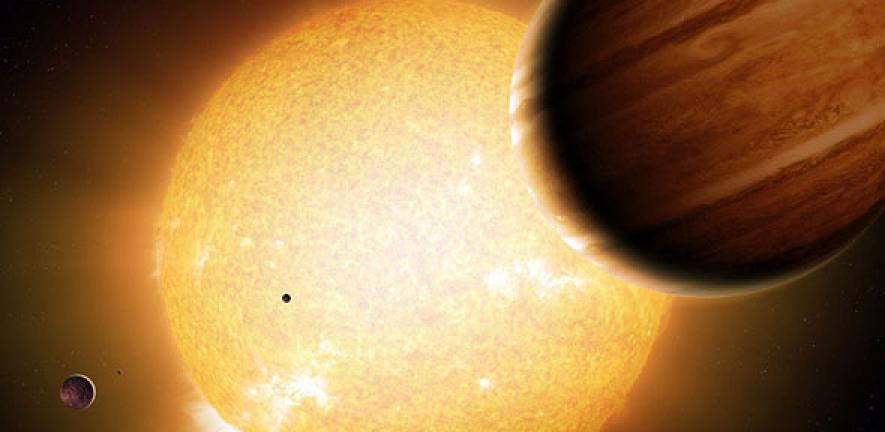
After analyzing four years of Kepler space telescope observations, astronomers from the University of Toronto, and of the University of Cambridge have given us our clearest understanding yet of a class of exoplanets called “warm Jupiters”, showing that many have unexpected planetary companions.
After analyzing four years of Kepler space telescope observations, astronomers from the University of Toronto, and of the University of Cambridge have given us our clearest understanding yet of a class of exoplanets called “warm Jupiters”, showing that many have unexpected planetary companions.
We had not anticipated this remarkable result. This challenges our ideas about which conditions are sufficient for the formation of planets.
Amaury Triaud
Warm Jupiters are large, gas-giant exoplanets—planets found around stars other than the Sun. They are comparable in size to Jupiter and Saturn in our Solar System. But unlike the Sun’s family of giant planets, Warm Jupiters orbit their parent stars at roughly the same distance that Mercury, Venus and the Earth circle the Sun. They take ten to two hundred days to complete a single orbit instead of decades. Their origin is heavily debated topic of research.
It is generally thought that Warm Jupiters cannot form on the orbits that we find them on today; they are too close to their parent stars to have accumulated enough mass, and sufficient gas. Instead, it appeared more likely that they had formed in the outer reaches of their planetary systems and had migrated inward to their current positions. However such a migratory history would also leave a trace. The large gravity of any migrating Warm Jupiter would have disturbed any neighbouring or companion planets, ejecting them from the system.
But, instead of finding “lonely”, companion-less Warm Jupiters, the team found that 11 of the 27 targets they studied have companions ranging in size from Earth-like to Neptune-like.
The team’s analysis, published this week in the Astrophysical Journal, demonstrates the existence of two distinct types of warm Jupiters, each with their own formation and dynamical history.
The two types include those that have smaller planetary companions and thus, likely formed near to where we find them today; and warm Jupiters without any companions indicating that they likely migrated to their current positions.
The presence of many smaller sized planetary companions to warm Jupiters provides our strongest evidence that planets similar to Jupiter and Saturn can assemble on orbits shorter than the Earth’s. “And when we take into account that there is more analysis to come,” says lead-author Chelsea Huang, “the number of Warm Jupiters with smaller neighbours may be even higher. We may find that more than half have companions.”
This result came as a “surprise” according to Amaury Triaud, now a research fellow at the Institute of Astronomy, in Cambridge. “Before starting this study, we had not anticipated this remarkable result. This challenges our ideas about which conditions are sufficient for the formation of planets. It reinforces the view that planets form in richer and more diverse ways than what can be glimpsed from the sole study of the Solar system planets.”
Reference
Huang, C et al. Warm Jupiters are less lonely than Hot Jupiters: close neighbors. Astrophysical Journal; 6 July 2016; DOI:10.3847/0004-637X/825/2/98
Based on a press release prepared by the University of Toronto.

The text in this work is licensed under a Creative Commons Attribution 4.0 International License. For image use please see separate credits above.




